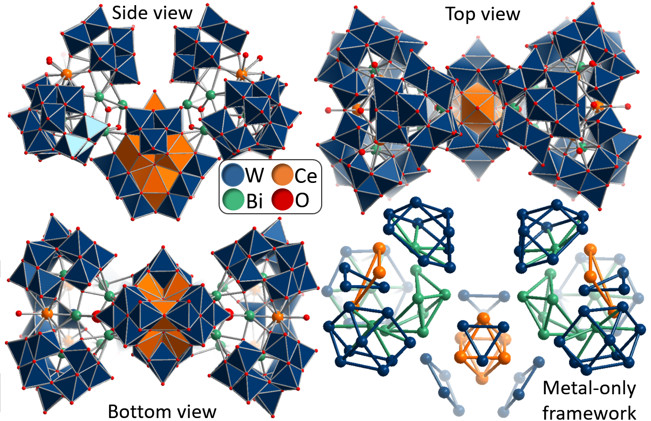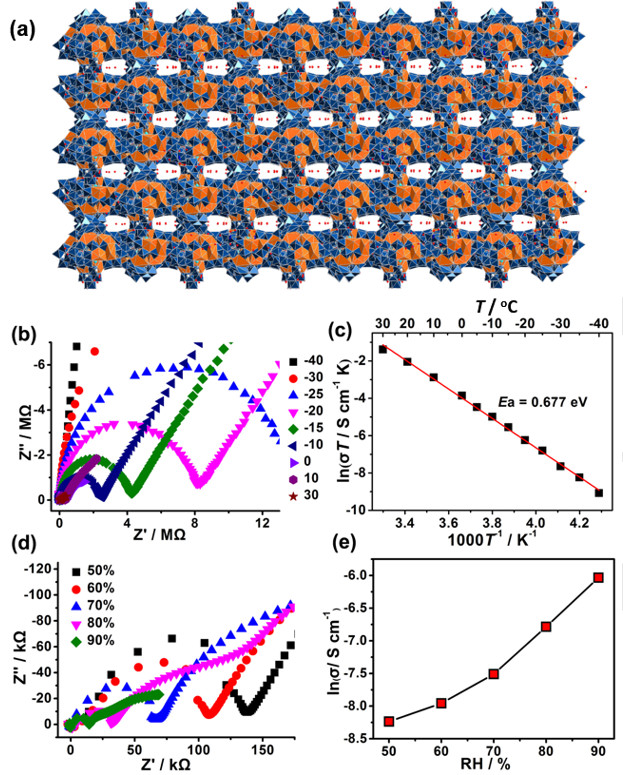Recently, professor ZHAO Junwei’s group of HENU has made great research progress in the assembly and functionlization of high-nuclear rare-earth incorporated polyoxotungstate nanoclusters. The relevant article entitled “Aggregation of Giant Cerium-Bismuth Tungstate Clusters into a 3D Porous Framework with High Proton Conductivity” has been published online in Angew. Chem. Int. Ed., which is an international top journal of chemistry.
In the past several years, professor ZHAO Junwei’s group has been concentrated on the assembly and application of high-nuclear rare-earth incorporated polyoxotungstate nanoclusters and has made a series of important research results (Chem. Eur. J. 2017, 23, 2673–2689;Sci. Rep. 2016, 6, 26406;Inorg. Chem. 2017, 56, 7257–7269;Inorg. Chem. 2017, 56, 13228−13240;Inorg. Chem. 2016, 55, 3881−3893;Cryst. Growth Des. 2017, 17, 3917−3928;Cryst. Growth Des. 2016, 16, 108–120;Cryst. Growth s. 2014, 14, 5495−5505). Very recently, they have successfully prepared the first high-nuclear rare-earth incorporated tungstobismuthate nanocluster and intensively investigated its anhydrous proton conductivity behavior in the temperature range of –40–30 oC. The alternating-current impedance results indicate that this nanocluster exhibits the high proton conductivity under low temperature conditions. This finding can provide some experimental foundations for designing and preparing low-temperature proton conducting materials.

The structure of this nanocluster

The 3-D porous structure and the proton conductivity behavior of this nanocluster
The first author of this article is LIU Jiancai , a master student from HENU School of Chemistry and Chemical Engineering. ZHAO Junwei, SONG Yufei (a professor from Beijing University of Chemical Technology) and Carsten STREB (a professor from Ulm University) are the joint corresponding authors. The first corresponding institution is Henan University.

 News /
Content
News /
Content


